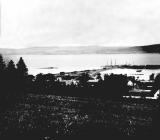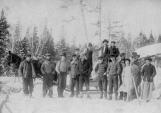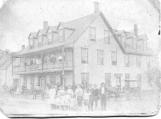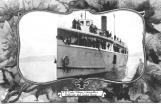1
The Restigouche was the last part of New Brunswick to be developed. From the beginning, its economy was tied to the forests.2
When the great Miramichi Fire destroyed most of the forests in central New Brunswick, lumber interests began looking farther north, to the stands of the Restigouche and Nepisiquit.Dalhousie owes its beginnings to that movement.
3
Like so many other New Brunswick communities, lumber mills and shipping dominated the economy.1890
Dalhousie, New Brunswick, Canada

4
Dalhousie's harbour was filled with ships, mainly loading lumber for European destinations.6
Dalhousie's harbour, where ships took timber of the Restigouche to ports in Europe.1890
Dalhousie, New Brunswick, Canada

7
On the north side is one of the best places for booming operations to be found in America, and which no doubt was the principal reason for the selection of this spot as the site of a town.Nature has here built a wall and left a door of entrance within, with timber sufficient to load a fleet of ships which can lie in perfect safety.
Alexander Munro, 1855
8
The port influenced the town in many ways. That influence continues to this day.1890
Dalhousie, New Brunswick, Canada






